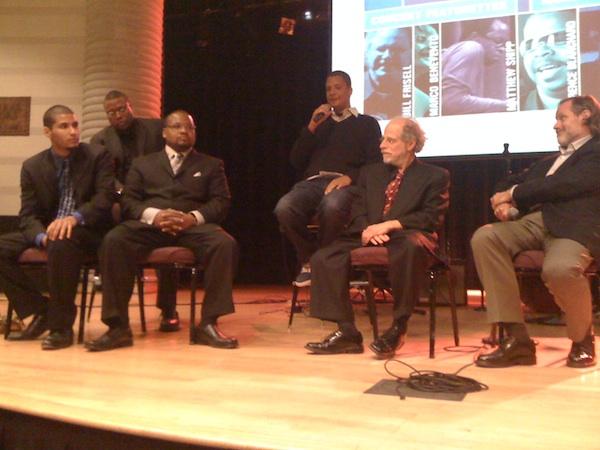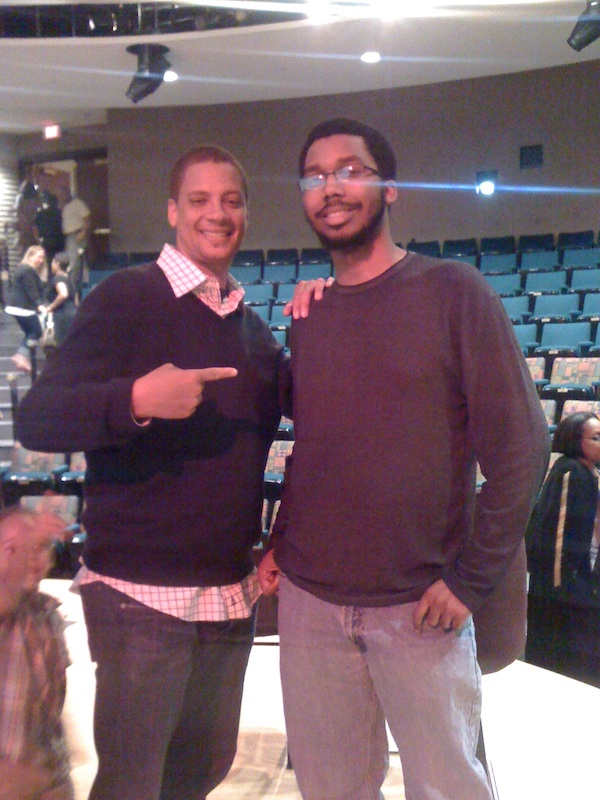
In celebration of Black Music Month: Icons Among Us
By Gregory Lucas-Myers, Charles H. Wright Museum of African-American History
When the word “jazz” is spoken, minds tend to race one of two ways for artists to reference. When looking back, names such as Armstrong, Coltrane, Monk, and Davis stand tall with long, deep shadows. When looking to the music today, those who are not familiar with the scene tend to lean toward the “smooth” or jazz fusion variety, populated by Kenny G, Spyro Gyra, Sade, and more. For the real heavy radio listeners, Al Green and Luther Vandross might creep in. Try to point to the future of the art, and many minds simply don’t know where to go.
This is not to discredit or put anyone on a pedestal, but a sense of feeling stuck in the mud or unaware permeates the public consciousness when it comes to contemporary jazz. “Icons Among Us: Jazz in the Present Tense” looks to not only pull today’s jazz acts out of the shadows of the masters, but to spread, make accessible, and push the unheard music of today into the future. On Wednesday, June 15, 2011, the Charles H. Wright Museum of African American History partnered with the Detroit Jazz Festival to screen the first episode in this documentary series. The audience was also treated to a stellar performance by the Sean Dobbins Quartet, along with a passionate discussion with the episode’s chief editor Kristian Hill and executive producer John Comerford.
Properly titled “A Quiet Revolution” after a quote from Terence Blanchard, the starter episode of “Icons Among Us” presents views on jazz’s present players, where it has been, where it is headed, and even the word “jazz” itself. The mixed perspectives and arguments provide an electric dynamic that is as soul-speaking as the music. One expects Herbie Hancock to elegantly muse that “the term ‘jazz’ might be its own worst enemy,” but the interjection of…let’s say “bluntly”-worded commentary from Robert Glasper and Matthew Shipp, simultaneously destroying and elevating the mystique of jazz history, is just one comparison. Greg Osby, in response to comments on how his group keeps changing, responds that “there are too many young people who are amazing;” while promoter George Wein states that “We don’t know what we’re looking for in the jazz player now.” For music that’s often seen as something to relax to, the opinions are heated and passionate, worrying and energizing.
This is to say nothing of the excellent musical clips provided in the documentary. Taken from live performances at venues across the nation, many of the commentators are captured in their essence, in addition to other current acts such as Esperanza Spalding, The Bad Plus, and Eric Revis. Piano, bass, trumpet, saxophone, keyboards, and computer laptops are all put on aural display as the star subjects of the documentary.
Throughout it all, I sat a few seats over, in the front row, from a nine-year old girl, feet out of her shoes and up in the seat, enthralled with every word said and note played. Out of everyone there, it seems obvious to me that she was the most important person in the auditorium.
Founded in 1965, the Charles H. Wright Museum of African American History is the world’s largest institution dedicated to the African American experience. The “In The Name of Love” Black Music Month Tribute Concert to jazz radio great Ed Love takes place Saturday June 25 at 7pm, and is free of charge. For more information, please visit www.chwmuseum.org.
Recent Content
-
Artsarticle ·
-
Artsarticle ·
-
Artsarticle ·


